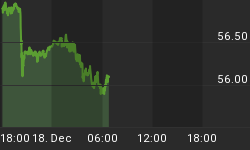Net foreign capital flows into the US rose 23% to $66.1 bln in December from a revised $53.8 bln in December (initial was $56.6 bln). This was the second straight month in which net capital flows into the US fall below the trade deficit.
The dollar is falling across the board, with the brunt of the decline largely concentrated against euro, where EURUSD is testing the 200-day MA. We noted this morning that the "the external imbalance story is gradually making a comeback, especially if the TICS report shows a figure of less than $70 bln".
Recall that the reason the dollar held up after last month's release of the TICS shortfall was primarily the market anticipation of Fed Chairman Bernanke's Congressional testimony, which ended up being USD positive.
Today, Fed tightening theme is gradually being replaced by the external imbalance theme, not only in light of yesterday's release of the record current account deficit in Q4, which stands at 7% of GDP, but also in light of the emerging reports that the Fed's will stop raising rates after this month. (see more on UAE's FX decision below)

Net foreign purchase of US Treasuries fell 76% to $4.4 bln, the lowest level since January 2003. The main culprit was that private flows of US Treasuries turned into net sales for the first time since June 05, posting a net outflow of $4.3 bln, while official flows (central banks) rose 50% to $8.4 bln.
POSITIVES
• Total net foreign purchases of US stocks soared 123% to $21.2 bln, showing a continuation of corporate paper ( US stocks and bonds) making up for the declines of foreign flows into US treasuries.
• Net purchases of foreign stocks by US residents fell 118% to $12.8 bln from $16.7 bln. US residents became net sellers of foreign bonds at $729 mln from a $4.0 bln net purchase in December.
• Net foreign purchases of US agencies rose 130% to $26.7 bln $12.8 bln, the highest since November 2004, largely due to a 99% increase by private institutions (hedge funds), which rose to $18.2 bln.
NEGATIVES
• Japanese holdings of US Treasuries fell 2.4% to $668.3 bln, reaching their lowest level since April 2004, and largely rebutting the US Treasury's accusations that Japan is keeping its currency artificially low. It is plausible that the US refocus on Japan is a quid pro quo to Beijing before the latter announces a modest revaluation next month, coinciding with the visit of China's president to the US.


The chart above places in perspective the gradual increase of OPEC holdings of US Treasuries versus the volatile nature of Caribbean based hedge funds. But as the chart shows below, Caribbean centers are also likely to be behind the soaring purchases of US stocks, which could also be used as an intermediary by OPEC.

More on the UAE FX reserve move
The United Arab Emirates' plan to shift 10% of its FX reserves from US dollars to euros is a significant event that will reemerge to haunt the US dollar as the affair develops into subsequent stages. Of crucial relevance is the fact that this is the first time than an Arab Gulf state expresses its intention to reduce its dollar holdings-- a development that ranks high in the worst case scenarios for the US currency -- depending on the extent of the shift of reserves; and on whether the trend will be pursued by other Arab Gulf nation states. One of the most crucial defense mechanisms for the supremacy of the US dollar to the risk of some nations reducing their US dollar reserves has long been the cordial relations between the US and Arab Gulf states. But Monday's decision suggests a gradual tide, in light of US Congress decision to Dubai Port's purchase for P&O operations in the US.
Aside from implications on the US capital account, the US current account side of its balance of payments could sustain a blow in the event that UAE's Emirates Airlines bids for Europe's Airbus A350 next month instead of Boeing's 787 Dreamliner. The order is expected to amount to as high as $7.5bn. On the capital account side of the ledger, as much as $200 bln in assets is estimated to be invested in global assets by UAE's Abu Dhabi Investment Trust.
EURUSD attempts closing above its 200-day MA
EURUSD posts its third consecutive daily rise, the longest winning streak since mid December. More specifically, the pair is attempting to close above the 200-day MA of $1.2050, which would be a key positive technical development for the currency. The chart below shows that unike in Jan 23, when the EURUSD last closed above the 200-day MA, today's testing of the 200 day MA is accompanied by a positive divergence in the MACD that places the pair at a better positioning to garner further gains.
Recall that we referred to the euros' stability on Friday, when we noted the euro's strong performance in the crosses. Although EURUSD fell below $1.19 on a stronger than expected US payrolls, EURGBP closed the week at its highest level since January 6, while EURJPY closed at its highest since February 10.
Bullishness in EURUSD would be further solidified in the event that the pair remains above $1.2050 in the Thursday Asian session and extends fresh advances in the subsequent session.
















